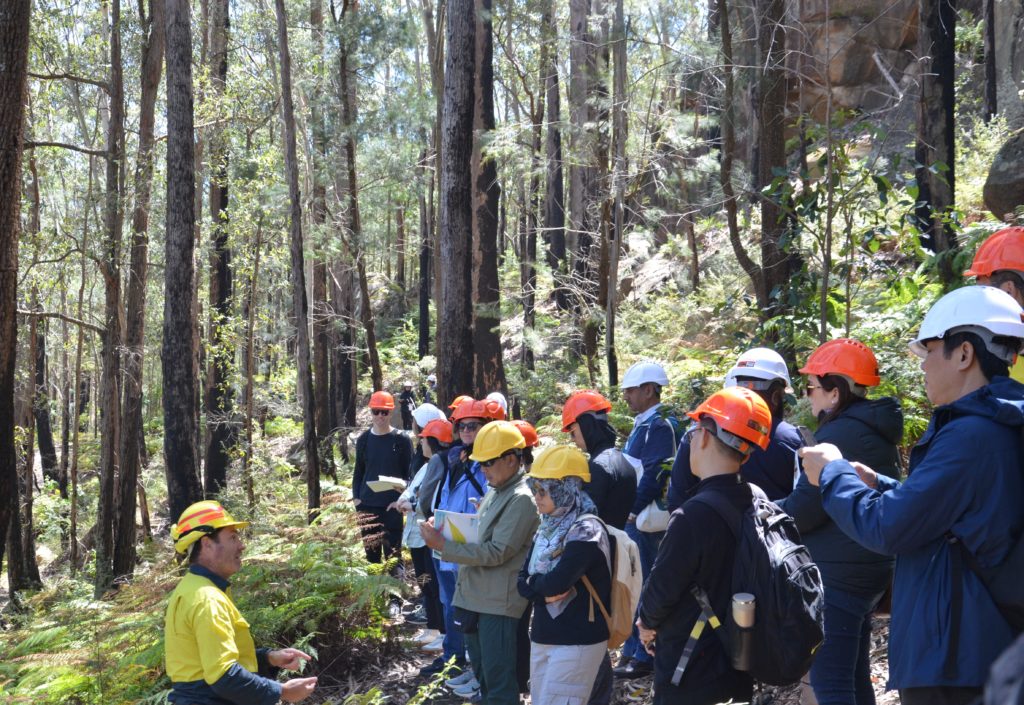The Forestry Corporation of NSW has hit back at claims debris left behind following a recent logging operation in Ourimbah State Forest have left a “tinderbox” on the Central Coast’s doorstep.
“After harvest operations in regrowth and plantation forests like Ourimbah State Forest, debris that is not able to be processed into timber product at local sawmills is graded into windrows and eventually burnt to create a bed of ash to enable eucalypt seedlings to be successfully raised,” a spokesperson said.
“Replantings will occur in Ourimbah State Forest next year.
“In the worst-case scenario of a summer bushfire these recently harvested corridors are important staging areas where our forest firefighters work to establish containment lines and backburn operations as we saw during the 2019-2020 Black Summer bushfires.
“These areas also serve as refuges and exit points for wildlife during bushfires, which our ecologists monitor.”
The spokesperson said information had been sent to several Central Coast residents, who have written to local MPs and Ministers this year asking questions about harvesting in the forest, explaining that only a small proportion of forested land is designated as State forest for ongoing timber production.
“Forestry Corporation of NSW has been appointed to manage State forests for a range of uses including tourism, environmental conservation and renewable timber production and around one per cent of State forests are harvested and regrown each year in line with strict environmental regulations,” a spokesperson said.
“Ourimbah State Forest, like all areas harvested for timber in NSW State forests, is a regrowth forest that has been harvested for timber and regrown many times before and is managed to be continually harvested and regrown; the current forest has been harvested sustainably for over 150 years and is regrowth forest.
“There are detailed environmental protections in place during all forestry operations in NSW and a thorough planning process must be completed ahead of every operation, which includes ecological surveys and mapping to identify and protect environmental features such as rainforest and old growth, wetlands and riparian zones, threatened ecological communities, ridge and headwater habitat, rocky outcrops and habitat for wildlife including koalas.
“Forestry Corporation also engages with Aboriginal communities while planning any operations to ensure cultural heritage is protected.
“These conditions were applied in the recent operations.”
The spokesperson said State forests grew durable timbers used in essential infrastructure like bridge decking, wharf timbers and power poles, as well as products used in homes including flooring, decking and furniture.

Meanwhile, delegates from the Asia-Pacific Forestry Commission recently took part in a field trip hosted by several Forestry Corporation officials looking at sustainable, multi-use forest management in Ourimbah State Forest as part of a larger tour of the Watagan Mountains.
The Commission is represented by international delegates who report to the United Nations on forestry matters in the Asia-Pacific region.
They heard how a unique sustainability model that balances multiple uses in State forests allows recreational activities to occur in conjunction with timber harvesting and biodiversity conservation.
They were also shown unique Aboriginal sites and discussed the partnerships program that Forestry Corporation has with local Aboriginal groups and businesses.
“Delegates were enthralled by stories of thousands of years of occupation by Aboriginal people and were very interested to understand the long-held knowledge, care and responsibility required to care for Country so it stays healthy, safe and productive for both people and wildlife,” Partnership and Heritage Team Leader John Shipp said.
“They were also pleased to hear about partnership programs in the local area, which see Aboriginal businesses run cultural tours in State forests.”
The field trip also highlighted many important cultural sites in Ourimbah State Forest.
“It was a great opportunity to show our international visitors a shelter site, grinding grooves and other sites that are common to these sandstone mountains as well as a site we have invested in significantly to protect from damage and illegal dumping,” Cultural Heritage Supervisor Sharon Hodgetts said.
Delegates were shown a selective timber operation and it was detailed how through careful planning, important timber species are sustainably harvested.
“These forests have a long history of active timber harvesting and regrowth, from the original timbergetting with bullocks and cross-cut saws of big old timber 100-plus years ago to the modern safe mechanised techniques harvesting younger regrowth trees,” Forest Practices Manager Tony Brown said.
“The Watagan Mountains have always produced a range of specialty products such as turpentine, which is durable and resistant to marine borers and used extensively in marine applications such as piles and decking in our coastal estuaries and around Sydney Harbour.”
Biodiversity and Strategy Manager Justin Williams explained to delegates the comprehensive biodiversity management program that protected threatened species in multiple use State forests.
He said local regrowth forests supported dozens of threatened species such as the Red-crowned Toadlet, the Giant Burrowing-frog, three species of large forest owls, Gang-Gang and Glossy Black-Cockatoos, Eastern Pygmy Possums and Yellow-bellied Gliders.
“Globally, forests in NSW rank very highly for the level of forest reservation with more than 80 per cent of public forests in the area protected in either National Parks or State Forest reserves,” he said.
“Timber harvesting is selective and searching for threatened species and their habitat is a key component of what we do to ensure forestry operations are sustainable.
“Forestry Corporation is one of the largest managers of forests with around one million hectares primarily managed for biodiversity conservation so as the world is moving increasingly towards valuing nature-based solutions we are well placed to participate in these growing environmental markets.”
For more information about Forestry Corporation of NSW, visit forestrycorporation.com.au
Source:
Forestry Corporation of NSW


